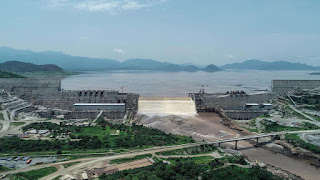Ethiopia Makes A Bold Move To Save Itself- Starts Watering The Renaissance Dam Despite Egyptian Resistance
Ethiopia has gone ahead with the filling for its historic Renaissance Dam and no one seems to be happy about it. There are a counted 11 Nile Basin nations that depend on the waters from the Nile. But the Grand Ethiopian Renaissance Dam (GERD) is getting filled, despite Egypt and Sudan worrying to hell about the water supply being diverted.
Despite Ethiopian authorities making it clear that no such thing will actually happen, the Nile Basin Initiative (NBI) doesn’t seem to be working. Set up in 1999, as a consortium of ten powerful nations, there has been an indefinite delay and huge amount of resentment over the structuring and use of the dam.
The NBI was set up as an intergovernmental partnership of countries like Burundi, DR Congo, Egypt, Ethiopia, Kenya, Rwanda, South Sudan, The Sudan, Tanzania and Uganda. Eritrea continues to participate as an observer.
The GERD construction through the Blue Nile was suppose to provide electricity and livelihood to the 10 million population in Ethiopia that has suffered under poverty, drought and deprivation for decades together. With the establishment of the dam, Ethiopia also hopes to generate electricity for itself as well as enough to export. But Egypt fears regional instability.
The UN Council has said it would convene on the behest of Egypt and South Sudan. But it has also said that very little can it do as of now. The underlying message is that the 11 Nile Basin countries have to amicably accept and understand that the water that flows down the Blue and White Nile is finite, depending on rainfall per season. What has to be really controlled is the movement of population nearer to the basins and the eventual pressure it will create on the whole ecosystem. Ethiopia is worst affected in the whole scheme of things.
Currently some 260 million people, about 54 percent of the total population of the 11 countries through which the Nile runs, live in the basin. Egypt has by far the largest number of citizens dependent on its waters — 86 million, about 94 percent of its entire population.



Comments
Post a Comment